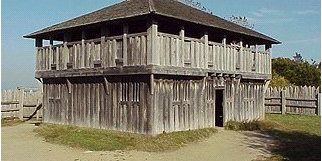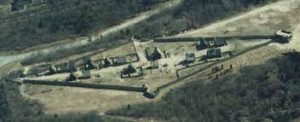 The Plimoth Fort and palisade wall were built in the summer of 1622. A Benjamin Franklin aphorism published in his Poor Richard’s Almanack was, “Love your neighbor, yet don’t pull down your hedge.” This “pithy observation” of his, like many others, was derived from the wisdom literature of the Bible.
The Plimoth Fort and palisade wall were built in the summer of 1622. A Benjamin Franklin aphorism published in his Poor Richard’s Almanack was, “Love your neighbor, yet don’t pull down your hedge.” This “pithy observation” of his, like many others, was derived from the wisdom literature of the Bible.
The Bible’s injunction from the teachings of Jesus, “Love your neighbor as yourself,” found in Matthew 22:39, clearly defines love with limits. Jesus taught that you can’t love someone and drop all guards for self-preservation. It was this biblical truth that was extended during the Reformation for international relations of love with border security. The tension that existed between the Pilgrims and their Native neighbors was similar. While they were growing in love and trust toward one another, neither the English nor the Wampanoag wanted to drop their guard – and neither should have.
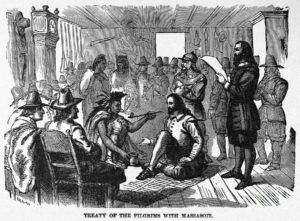 It was in March of 1621 that the Alliance of Peace was formed. Before it was negotiated, however, neither the English nor the Wampanoag were willing to send their leaders to meet, though they both wanted peace. They ended up having both English and Native hostages during the negotiations. They laid down their weapons and settled the alliance, which ended up lasting more than 50 years without a major war. In the spring of 1622, however, several incidents caused the Pilgrims to believe that a palisade wall and a fort were necessary for further security, all the while maintaining and investing in a continued friendship with their native neighbors.
It was in March of 1621 that the Alliance of Peace was formed. Before it was negotiated, however, neither the English nor the Wampanoag were willing to send their leaders to meet, though they both wanted peace. They ended up having both English and Native hostages during the negotiations. They laid down their weapons and settled the alliance, which ended up lasting more than 50 years without a major war. In the spring of 1622, however, several incidents caused the Pilgrims to believe that a palisade wall and a fort were necessary for further security, all the while maintaining and investing in a continued friendship with their native neighbors.
A growing jealousy between Squanto and Hobomok, their interpreters, took place. Squanto wanted to make it look like he could stop a native attack. For example, as they were departing for a voyage to trade with the Massachusetts tribe, with both Squanto and Hobomok on board, an incident occurred at the Plantation that caused those left behind to send off a cannon round to bring the boat back.
“An Indian belonging to Squanto’s family came running in seeming great fear and told them that many of the Narragansetts, with Corbitant and he thought also Massasoit, were coming against them… no Indians appeared… Hobomok was confident for Massasoit, and thought all was false.”
Thomas Weston (their financial agent) who sent shiploads of people to Plimoth without supplies, making it difficult for the colony to survive, was described by Bradford: “Thus all their hopes in regard of Mr. Weston were laid in the dust; and all his promised help turned into an empty advice, which they apprehended was neither lawful nor profitable for them to follow.”
Winslow writes: “In the time of these straits… the Indians began again to cast forth many insulting speeches, glorying in our weakness, and giving out how easy it would be ere long to cut us off. Now also Massassowat seemed to frown on us, and neither came or sent to us as formerly. These things occasioned further thoughts of fortification. And whereas we have a hill called the Mount, enclosed within our pale, under which our town is seated, we resolved to erect a fort thereon; from whence a few might easily secure the town from any assault the Indians can make, whilst the rest might be employed as occasion served. This work was begun with great eagerness, and with the approbation of all men, hoping that this being once finished, and a continual guard there kept, it would utterly discourage the savages from having any hopes or thoughts of rising against us. And though it took the greatest part of our strength from dressing our corn, yet, life being continued, we hoped God would raise some means in stead thereof for our further preservation.”
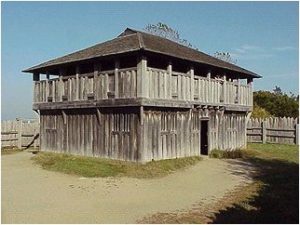 Bradford makes it clear that the natives they feared were not the Wampanoag with whom they had an alliance, but rather the “Narragansetts, and also the hearing of that great Massacre in Virginia” which made “all hands willing to dispatch the same.” There is no question that though trust had been built with the Wampanoag and an agreement reached in March of 1621, self-preservation was still a motivating factor to build walls for greater security. Not everyone can be trusted, in spite of an overall motive to build relationships locally and internationally.
Bradford makes it clear that the natives they feared were not the Wampanoag with whom they had an alliance, but rather the “Narragansetts, and also the hearing of that great Massacre in Virginia” which made “all hands willing to dispatch the same.” There is no question that though trust had been built with the Wampanoag and an agreement reached in March of 1621, self-preservation was still a motivating factor to build walls for greater security. Not everyone can be trusted, in spite of an overall motive to build relationships locally and internationally.
Attempted excavations in Plymouth have found a few have attempted to find the foundations of the Fort, Watch-House, and palisade walls. A recent report stated that: “The palisade that had been erected in 1622 was in rough shape by 1633 and needed to be replaced; the work was to be carried out by all the able-bodied men of Plymouth. The palisade was rebuilt in 1635 and Thomas Boseman was hired to ‘do the fort.’ The posts were to be 10’ square, to be not over 10’ apart, with three rails between, and boarded nine feet high, cut sharp at the top; all the lumber to be sawed.’ …The only evidence of this sort of palisade would be post holes measuring maybe 2′ in diameter spaced up to 10′ apart. Very difficult targets to identify with anything but stripping off the topsoil over a very large area and which is like finding a needle in a haystack in the dark. The fort was rebuilt in 1675 at the start of King Philip’s War.”
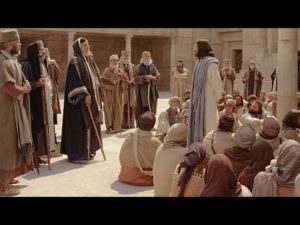 Matthew Henry comments on Matthew 22:39 and the injunction to “love thy neighbor as thyself” with these words that are worth remembering as we balance loving God with a proper love for self-preservation that we might better serve others. If we do not preserve our talents and resources through proper stewardship, we will not be able to adequately help others. What is true for individuals is also true for nations, as both Pilgrim and the Wampanoag understood. When our motive is rooted in the love of God, self-preservation limits are more easily understood. As Henry’s commentary states:
Matthew Henry comments on Matthew 22:39 and the injunction to “love thy neighbor as thyself” with these words that are worth remembering as we balance loving God with a proper love for self-preservation that we might better serve others. If we do not preserve our talents and resources through proper stewardship, we will not be able to adequately help others. What is true for individuals is also true for nations, as both Pilgrim and the Wampanoag understood. When our motive is rooted in the love of God, self-preservation limits are more easily understood. As Henry’s commentary states:
“To love our neighbor as ourselves, is the second great commandment. There is a self-love which is corrupt, and the root of the greatest sins, and it must be put off and mortified; but there is a self-love which is the rule of the greatest duty: we must have a due concern for the welfare of our own souls and bodies. And we must love our neighbor as truly and sincerely as we love ourselves; in many cases we must deny ourselves for the good of others. By these two commandments let our hearts be formed as by a mold.”

